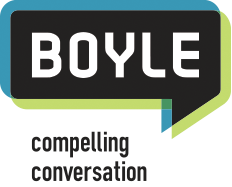“Crisis Communications on the Cutting Room Floor” Part I: Setting the Trap
Your organization is in full crisis management mode. Armed with legal counsel and a communications strategy, it’s time for your CEO to speak to the media. During a taped TV news interview, she hits all the right notes – staying on message, bridging to key points and projecting a calm, but concerned, demeanor. You and your staff rejoice – crisis controlled!

But hours later, when you all watch the newscast, you’re shocked to find two of the CEO’s comments were taken out of context, key facts were left out, and your company’s case is looking even worse than it did before the interview.
This type of scenario is not unique. Hatchet jobs (whether by news editors or self-inflicted) occur with regularity on local and national TV news. Consider this recent example:
A small local TV affiliate shot a story about toxins found in several homes. The property development company that built the homes flew their CEO in do to a one-on-one interview with the reporter the day prior to the scheduled broadcast.
The reporter, who’d agreed to ask only a few pre-approved questions, instead ambushed the CEO with “newly acquired” photos, unsubstantiated claims and anonymous quotes. Needless to say, the aired story cast the CEO as unprepared and defensive and it clearly did not advance her company’s position.
A“friendly” producer from CNN then offered the company a chance to set the record straight. Desperate, the CEO agreed and spent the days leading up to the interview taping anticipating and rehearsing answers to every possible question. The result? The 10-minute news expose featured a few quotes from the executive that again, were inserted out-of-context and failed to include key facts.
So where did this company go wrong? Their first mistake was to expect the first reporter to honor the terms of the interview agreement. Reporters earn raises, promotions and notoriety by exposing controversy, not by helping organizations stifle conflict. If it is to their advantage to change the rules while the cameras are rolling, there is little one can do to stop them.
The failure to understand the nature of the media (friendly or hostile) was also at the root of their second mistake with CNN. This was a classic David (the homeowners) vs. Goliath (the company) story, and the media NEVER sides with Goliath. That would yield the ratings equivalent of a “dog-bites-man” story and, as everyone knows, “man-bites-dog” stories are what draw viewers and make careers.
These errors were somewhat obvious, but there was another fundamental — but frequently unrecognized — error that the company made in both situations. What was it? To find out, stay tuned for Part II of “Crisis Communications on the Cutting Room Floor.” It will reveal how to beat TV interviewers and producers at their own game and get real control over your crisis communications. Don’t miss it!
